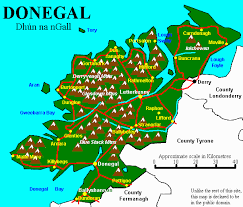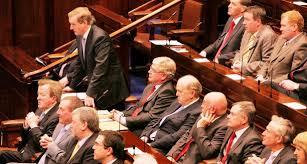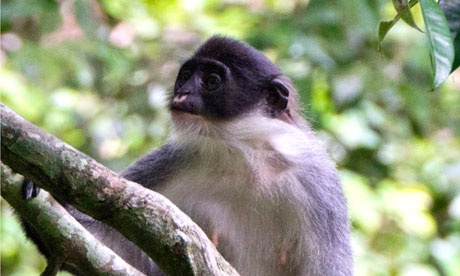Donegal people and drivers ‘the most helpful and friendliest in Ireland’


Drivers from Donegal are the most likely to pull in and help a stranded motorist, according to a new survey from AA Ireland.
A total of 61% of drivers in Donegal said they would intervene if they saw someone who needed assistance, compared to 40% of drivers in Kildare – who were rated the least likely to be “good Samaritans”.
A new survey by AA Ireland found that 61 per cent of drivers in Donegal said they would intervene if they saw someone who needed assistance compared to 40 per cent in Kildare and 43.2 per cent in Meath.
The survey asked 12,300 drivers whether they’d stop to help someone who visibly needed help or simply keep driving. Drivers were asked what they would do in the situation, rather than whether they have ever actually stopped to help in the past.
There was a clear gender divide in whether people would stop to help. 55 per cent of men said they would stop and help a female motorist while just 4 per cent of women said they would do the same for a lone male driver.
Some male respondents to the poll said that they wouldn’t be comfortable helping a lone female without someone else present for that they could be perceived as a threat.
Just under 60 per cent of respondents said they would stop to help a stranded driver who had young children in their car. The figure was higher for men than for women with 67 per cent of male drivers saying the would stop.
60 per cent of drivers say they would stop to help an elderly motorist whose vehicle had broken down, rising to 71 per cent among the poll’s male participants.
The poll also identified an element of camaraderie among motorcyclists, with respondents stating they would always stop to assist a fellow biker.
12,300 drivers were polled by AA Rescue for the survey.

The bodies of two men are recovered from the Killybegs harbour on Friday last


 The coastguard discover two bodies in search for missing pensioner The first body taken from the water near the Garda station was that of Michael McIntyre (50), from Malinbeg, Glencolmcille, who was last seen on Wednesday.Two bodies were recovered from Killybegs harbour yesterday afternoon, one of a 50-year-old fisherman and another of an elderly man who went missing from a local hospital. Gardaí said they were looking for another person at the time.
The coastguard discover two bodies in search for missing pensioner The first body taken from the water near the Garda station was that of Michael McIntyre (50), from Malinbeg, Glencolmcille, who was last seen on Wednesday.Two bodies were recovered from Killybegs harbour yesterday afternoon, one of a 50-year-old fisherman and another of an elderly man who went missing from a local hospital. Gardaí said they were looking for another person at the time.
The search continued for Paddy Keeney (87), who went missing from Killybegs Community Hospital shortly before noon. His body was recovered by divers shortly after 4.30pm.
Both bodies were taken to Letterkenny General Hospital for postmortems.
The Irish system fails to represent women fairly in the Dáil, says Enda Kenny


GENDER QUOTAS are essential to bring more women into politics but “there will be blood on the floor” at selection conventions as a consequence, a senior Fine Gael figure told a conference yesterday.
Fine Gael general secretary Tom Curran welcomed proposed legislation under which political parties would have to implement a 30 per cent gender quota for general election candidates, or else face severe financial penalties.
However, he said implementing the quotas would present a “huge challenge” for all parties when he addressed the How to Elect More Women conference.
The event at Dublin Castle was the brainchild of Kathleen Lynch, Minister of State for Equality at the Department of Justice.
“I think quotas are the only show in town for political parties,” Mr Curran said. “The reality is there’s going to be blood on the floor.”
The chairwoman of the conference, broadcaster Olivia O’Leary, said male candidates would probably have to be “displaced” to bring about greater representation of women. She asked Mr Curran what Fine Gael would do if local organisations ignored instructions from headquarters and “the boys sewed it up” at selection conventions.
Mr Curran said the party was prepared to restrict the number of candidates local organisations could choose at selection conventions. “We have an ace up our sleeve: we can add candidates.”
Earlier Taoiseach Enda Kenny said he knew “energetic debate” would arise whenever quotas were mentioned. “To those who challenge the concept, I’d just point out that women have been voting in Ireland now for over 90 years, but our system has failed to provide the people with a higher and more appropriate representation by women in the Dáil and in the Oireachtas in general.”
Tánaiste Eamon Gilmore described Leinster House, where just 15 per cent of seats are held by women, as “one of the most unnatural places in the world” and said it reminded him of a boarding school.
Asked if he would be prepared to stand aside for a woman candidate at the next election, he said no one had a right to retain candidacy: “To be honest, personally, I’d be very happy to pass it on to someone who’s willing to take it on.”
Fianna Fáil leader Micheál Martin said his party would attempt to amend the legislation on gender quotas to make it applicable to the 2014 local elections.
“The dramatic under-representation of half of the population in our Government, in our national parliament and in our councils distorts our political culture and it can only be tackled by being willing to overturn long-established practices,” Mr Martin said.
Sinn Féin deputy leader Mary Lou McDonald said the political culture had to be convinced change was possible. “We have a problem with our political culture and it’s very deep-seated, because the assumption is that men ‘do’ power.” She said the notion that “power is a masculine thing” had to be challenged, and women had to insist on “proper representation in our democratic structures”.
Senior French politician Dr Nicole Ameline said one of the most important obstacles to achieving equality was the endurance of stereotypes and cultural patterns. She praised the legislation to introduce gender quotas, although she predicted a “difficult” debate around the issue.
“This sort of law is the best booster of change,” she said.

The search continued for Paddy Keeney (87), who went missing from Killybegs Community Hospital shortly before noon. His body was recovered by divers shortly after 4.30pm.
Both bodies were taken to Letterkenny General Hospital for postmortems.
The Irish system fails to represent women fairly in the Dáil, says Enda Kenny
GENDER QUOTAS are essential to bring more women into politics but “there will be blood on the floor” at selection conventions as a consequence, a senior Fine Gael figure told a conference yesterday.
Fine Gael general secretary Tom Curran welcomed proposed legislation under which political parties would have to implement a 30 per cent gender quota for general election candidates, or else face severe financial penalties.
However, he said implementing the quotas would present a “huge challenge” for all parties when he addressed the How to Elect More Women conference.
The event at Dublin Castle was the brainchild of Kathleen Lynch, Minister of State for Equality at the Department of Justice.
“I think quotas are the only show in town for political parties,” Mr Curran said. “The reality is there’s going to be blood on the floor.”
The chairwoman of the conference, broadcaster Olivia O’Leary, said male candidates would probably have to be “displaced” to bring about greater representation of women. She asked Mr Curran what Fine Gael would do if local organisations ignored instructions from headquarters and “the boys sewed it up” at selection conventions.
Mr Curran said the party was prepared to restrict the number of candidates local organisations could choose at selection conventions. “We have an ace up our sleeve: we can add candidates.”
Earlier Taoiseach Enda Kenny said he knew “energetic debate” would arise whenever quotas were mentioned. “To those who challenge the concept, I’d just point out that women have been voting in Ireland now for over 90 years, but our system has failed to provide the people with a higher and more appropriate representation by women in the Dáil and in the Oireachtas in general.”
Tánaiste Eamon Gilmore described Leinster House, where just 15 per cent of seats are held by women, as “one of the most unnatural places in the world” and said it reminded him of a boarding school.
Asked if he would be prepared to stand aside for a woman candidate at the next election, he said no one had a right to retain candidacy: “To be honest, personally, I’d be very happy to pass it on to someone who’s willing to take it on.”
Fianna Fáil leader Micheál Martin said his party would attempt to amend the legislation on gender quotas to make it applicable to the 2014 local elections.
“The dramatic under-representation of half of the population in our Government, in our national parliament and in our councils distorts our political culture and it can only be tackled by being willing to overturn long-established practices,” Mr Martin said.
Sinn Féin deputy leader Mary Lou McDonald said the political culture had to be convinced change was possible. “We have a problem with our political culture and it’s very deep-seated, because the assumption is that men ‘do’ power.” She said the notion that “power is a masculine thing” had to be challenged, and women had to insist on “proper representation in our democratic structures”.
Senior French politician Dr Nicole Ameline said one of the most important obstacles to achieving equality was the endurance of stereotypes and cultural patterns. She praised the legislation to introduce gender quotas, although she predicted a “difficult” debate around the issue.
“This sort of law is the best booster of change,” she said.
Facebook plans to double the size of the Dublin operation?
Facebook CEO Mark Zuckerberg pictured above briefing his Dublin workforce last summer
Facebook to double size of Dublin operation? Facebook is reportedly planning a major expansion of its European headquarters in Ireland. The operation currently employs over 200 people.
According to a report on Bloomberg Facebook is planning to move from its current operation in Dublin’s Dockland basin to a new 120,000 sq ft office location which it will lease for five years.
Citing three people familiar with the plans who did not wish to be named, Facebook is considering the former Bank of Ireland headquarters building and two office blocks in the south Docklands area.
The report seems to have been spurred on by a report on Dublin city’s office market by Jones Lang LaSalle which said Facebook has “demand” for office space in the city.
Facebook’s Dublin offices are responsible for all of the social network’s operations outside the US.
The social networking giant, which counts over 800m users worldwide, is expected to IPO between March and May this year.
Dublin is rapidly garnering a reputation as the ‘internet capital of Europe’ due to the presence of significant operations of major online giants including Google, Amazon, Yahoo!, Facebook, Microsoft and most recently Twitter.
Google, for example, came to Ireland in 2004 with the intention of creating 300 jobs – today it employs more than 2,000.
Twitter, which announced plans to locate its International headquarters in the city in September, is also understood to be ramping up its data centre activity in Dublin by up to one third.
A Study weighs up the Pro’s & Con’s of marriage “Happiness a myth or fact”

Marriage may be overrated, according to researchers who compared the pros and cons of wedlock and cohabitation.
The idea that marriage has health and happiness advantages over living together is largely a myth, it is claimed.
Even the “honeymoon period” of well-being that sets married and cohabiting couples apart from singletons is short-lived, say scientists.
They also suggest that time and money devoted to promoting marriage might be better spent elsewhere.
Previous research has linked marriage to happiness and health, arguing that couples who wed tend to live longer, more contented lives. But these studies largely focused on comparisons with being single, or relied on “snapshots” of how people fared at specific points in time.
For the new research, US experts analysed data from the National Survey of Families and Households that followed the long-term progress of people’s relationships. The sample included 2,737 single men and women, 896 of whom married or moved in with a partner over the course of six years.
Lead author Dr Kelly Musick, from the College of Human Ecology at Cornell University in New York, said: “Marriage has long been an important social institution, but in recent decades western societies have experienced increases in cohabitation, before or instead of marriage, and increases in children born outside of marriage.
“These changes have blurred the boundaries of marriage, leading to questions about what difference marriage makes in comparison to alternatives.”
The findings, published in the Journal of Marriage and Family, showed that both married and cohabiting couples reduced their contact with parents and friends – and this appeared to be a lasting effect.
On the other hand, entering into any kind of committed union improved psychological well-being. The scientists concluded: “We are certainly not saying that marriage is irrelevant for individual well-being. What we have found is simply that, once individual differences are taken into account, it is far from a blanket prescription for individual well-being.”
‘Extinct’ monkey is rediscovered in the Indonesia jungle

Miller’s grizzled langur was thought to be extinct, but scientists in Borneo capture images of creature using camera traps
Scientists working in the jungles of Indonesia have rediscovered a large grey monkey so rare that many had believed it was extinct.
The scientists were baffled to find the Miller’s grizzled langur in an area well outside its previously recorded home range.
A team of experts set up camera traps in the Wehea forest, on the eastern tip of Borneo island, in June, hoping to capture images of clouded leopards, orangutans and other wildlife known to congregate at several mineral salt licks.
The pictures that came back caught them by surprise – groups of monkeys none had ever seen.
With virtually no photographs of the species in existence, the scientists faced a challenge to confirm their suspicions, Brent Loken, a PhD student at Simon Fraser University in Canada and one of the lead researchers, said. The only images available were museum sketches.
“We were all pretty ecstatic. The fact that, wow, this monkey still lives, and also that it’s in Wehea,” Loken said.
The team of local and international scientists published their findings in the American Journal of Primatology on Friday
The monkey once roamed the north-eastern part of Borneo, as well as the islands of Sumatra and Java and the Thai-Malay peninsula. Concerns were voiced several years ago that it might be extinct.
Forests in which the monkeys once lived had been destroyed by fires, human encroachment and conversion of land for agriculture and mining. An extensive field survey in 2005 found no evidence of the species.
“For me, the discovery of this monkey is representative of so many species in Indonesia,” Loken said. “There are so many animals we know so little about, and their home ranges are disappearing so quickly. It feels like a lot of these animals are going to quickly enter extinction.”
The scientists’ next step will be to return to the 38,000-hectare (90,000-acre) forest to try to find out how many grizzly langurs there are.
They appear in more than 4,000 images captured over a two-month period, Loken said, but added that it was possible one or two families had kept returning.
“It’s indeed a highly enigmatic species,” Erik Meijaard, a conservationscientist who spent more than eight years doing field research in the area, said.
In the past, grizzly langurs were hunted to near extinction for their meat and the bezoar “stones” that can, on occasion, be found in their guts, he said. Bezoars are believed by some to neutralise poison.
No comments:
Post a Comment